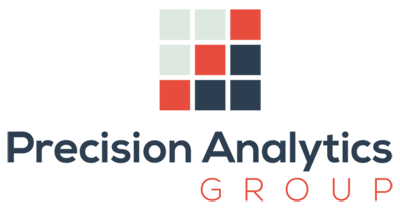Alteryx Designer is a powerful data analytics platform designed to help users with various levels of technical expertise easily perform advanced analytics and data preparation tasks. It is an end-to-end solution that enables users to automate complex data workflows, from data integration and data blending to predictive modeling and reporting. In this blog post, we will take a closer look at Alteryx Designer, exploring its key features, benefits, and use cases.
Key Features of Alteryx Designer
Alteryx Designer offers a wide range of features that make it a comprehensive data analytics platform. Here are some of its key features:
Data Integration and Blending: Alteryx Designer allows users to integrate and blend data from multiple sources, including spreadsheets, databases, cloud-based systems, and big data platforms. Users can use pre-built connectors or build custom ones to integrate data seamlessly.
Data Cleansing and Transformation: Alteryx Designer provides a range of tools to clean and transform data, including parsing, standardizing, and cleaning data. Users can also use conditional logic to filter and manipulate data.
Data Analysis and Modeling: Alteryx Designer offers a range of tools for data analysis and modeling, including predictive analytics, spatial analysis, and text mining. Users can build models without writing code, making it easy for non-technical users to perform advanced analytics.
Collaboration and Sharing: Alteryx Designer allows users to collaborate with other team members, share workflows, and publish data and analytics results to various output formats.
Benefits of Alteryx Designer
Alteryx Designer offers several benefits, including:
- Increased Efficiency: Alteryx Designer automates complex data workflows, reducing the time and effort required to perform advanced analytics tasks. Let’s say you have a large dataset with millions of rows and hundreds of columns that you need to clean and transform before conducting analysis. Traditionally, this would require manual coding in a programming language like Python or SQL, which can be time-consuming and error-prone. For example, you could use the “Input Data” tool to import the dataset, and then use tools like Select and Filter to extract only the columns you need and remove any irrelevant or missing data. Next, you could use the Cleanse and Parse tools to standardize the data and separate text fields into separate columns.
- Better Data Quality: Alteryx Designer allows users to clean and standardize data, improving data quality and reducing errors. One example of increased efficiency with Alteryx Designer is automating data preparation and cleansing processes. Data preparation and cleansing can be a time-consuming and error-prone task for analysts and data scientists. It involves tasks such as removing duplicates, standardizing and transforming data, filling in missing values, and correcting inconsistencies in data.
- Improved Accuracy: Alteryx Designer’s predictive modeling and machine learning tools enable users to make more accurate predictions and improve decision-making. For example, a data analyst wants to build a predictive model to predict customer churn for a telecommunications company. The analyst has a dataset with customer information, such as demographics, usage patterns, and contract details. The analyst can quickly preprocess and clean the data, and then select from a variety of predictive models, such as logistic regression, decision trees, or random forests. The analyst can use the automated machine learning feature of Alteryx Designer to increase the predictive model’s accuracy since it automatically chooses and fine-tunes the optimal model based on the data.
- Enhanced Collaboration: Alteryx Designer’s collaboration features enable team members to work together, share workflows, and collaborate on analytics projects. Suppose a team of data analysts are working on a project together in Alteryx Designer. One analyst creates a workflow to clean and preprocess the data, while another analyst needs to build a predictive model using the preprocessed data. The first analyst can publish their workflow to a shared gallery, which the second analyst can access and incorporate into their own workflow. The second analyst can also provide feedback or suggestions on the first analyst’s workflow, which can be easily shared and discussed within the platform. Additionally, version control allows for multiple analysts to work on the same workflow simultaneously, while ensuring that changes are tracked and can be easily reverted if necessary.
Use Cases of Alteryx Designer
Alteryx Designer can be used for various use cases, including:
- Marketing Analytics: Marketers can analyze consumer data, create predictive models, and improve marketing efforts with the aid of Alteryx Designer. Analyzing the success of a marketing campaign is one example of a Marketing Analytics use case in Alteryx Designer. This might entail combining information from various sources, including metrics for social media engagement, email marketing, and website traffic. You might quickly clean and transform this data using Alteryx Designer to determine key performance indicators (KPIs) like click-through rates, conversion rates, and return on investment (ROI). Also, you may use predictive analytics to foresee the effects of next marketing initiatives and modify your approach, as necessary. You may improve your approach for optimum impact and obtain insightful information on how effective your marketing initiatives are.
- Financial Analytics: Alteryx Designer can help financial analysts analyze financial data, build predictive models, and identify financial risks and opportunities. Cash flow projections could be one Financial Analytics use case in Alteryx Designer. This might entail combining information from various sources, including economic indicators, historical financial data, and current balance sheets. You might quickly clean and convert this data using Alteryx Designer to compute important financial indicators like cash inflows, outflows, and balances. To forecast future cash flows based on previous data and outside variables like interest rates and economic development, you might also use time-series forecasting methods. You can acquire insightful understanding of your cash flow condition and make wise decisions.
- Supply Chain Analytics: Alteryx Designer can help supply chain analysts optimize supply chain operations, analyze data from suppliers, and identify cost-saving opportunities. One example of a Supply Chain Analytics use case in Alteryx Designer could be optimizing inventory levels. This could involve blending data from multiple sources, such as historical sales data, current inventory levels, and lead times for suppliers. You could easily clean and transform this data to calculate key performance indicators (KPIs) such as inventory turnover, stockout rates, and carrying costs. You could also use statistical modeling tools to forecast demand and estimate optimal inventory levels based on service levels and lead times. Additionally, you can leverage Designer to gain valuable insights into your inventory management practices and make data-driven decisions to optimize your supply chain and reduce costs.
- Healthcare Analytics: Alteryx Designer can help healthcare providers analyze patient data, build predictive models, and optimize healthcare operations. One example of a healthcare analytics use case in Alteryx Designer could be predicting patient readmission rates. In this scenario, healthcare organizations are often penalized financially for high rates of patient readmissions within a certain timeframe after being discharged. Predicting which patients are at a higher risk of readmission can help healthcare providers intervene earlier and prevent unnecessary readmissions. A healthcare analyst can gather and integrate data from various sources, such as electronic health records, demographics, social determinants of health, and clinical history. From there, they can then use the predictive analytics tools to build a model that can predict the likelihood of a patient being readmitted. The model could = take into account various factors such as age, gender, length of stay, diagnoses, and medications, to generate a risk score for each patient. The healthcare organization can then use this risk score to prioritize interventions and allocate resources more effectively to reduce readmission rates and improve patient outcomes.
Conclusion
Alteryx Designer is a comprehensive data analytics platform that enables users to perform complex data workflows, from data integration and data blending to predictive modeling and reporting. With its range of features, benefits, and use cases, Alteryx Designer is an essential tool for data analysts, data scientists, and business users who want to analyze and transform data efficiently and accurately.
By Chris Williams
Certified Alteryx Partner
and Tableau Desktop Specialist


